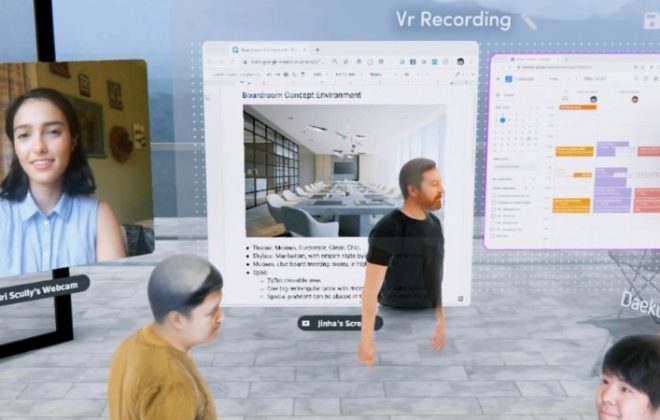Lower IT Costs in 2023
Reducing IT costs is a priority for many organizations in 2023, as technology expenses can quickly add up and eat into profits. However, reducing IT costs doesn’t have to mean cutting corners on technology investment or sacrificing the tools and resources your team needs to do their job effectively. Here are some strategies for reducing IT costs without sacrificing quality:
- Assess your technology needs:The first step to reducing IT costs is to understand what technology you need. Review your technology inventory and consider what can be consolidated, retired, or replaced with more cost-effective options. This can help you reduce expenses on licenses, hardware, and maintenance.
- Adopt cloud computing: Cloud computing can be a more cost-effective alternative to traditional on-premises IT infrastructure. By using cloud services, you can reduce or eliminate the need for expensive hardware, such as servers, and reduce costs associated with maintenance, upgrades, and backups.
- Implement automation: Automating manual processes can help reduce IT costs by increasing efficiency and reducing the need for manual labor. This can be done through the use of tools such as automation scripts, task schedulers, and orchestration software.
Advantages of using AI to support your growing IT needs
- Increased Efficiency: AI can automate routine tasks and provide quick solutions to common problems, freeing up IT support staff for more complex issues.
- 24/7 Availability: AI-powered IT support systems can provide support around the clock, without the need for breaks or time off.
- Improved Accuracy: AI can analyze vast amounts of data and identify patterns and solutions more accurately than humans, reducing the number of errors.
- Personalization: AI can provide personalized support based on an individual’s previous interactions and issue history.
- Cost Savings: Automating routine tasks through AI can reduce the cost of IT support compared to relying solely on human staff.
- Scalability: AI systems can handle an increasing volume of support requests without adding additional resources, making it easier to scale IT support operations.
- Outsource IT support: Outsourcing IT support to a third-party provider can be a cost-effective alternative to hiring a full-time in-house IT team. This can be especially helpful for small businesses that may not have the resources to support a full-time IT staff.
Advantages to IT Support include:
- Cost savings: Outsourcing IT support can reduce labor costs as compared to having in-house IT personnel.
- Access to expertise: Outsourcing provides access to a pool of IT professionals with specialized skills and experience.
- Improved efficiency: IT outsourcing companies can often complete tasks more efficiently and effectively than in-house IT teams.
- Increased focus on core business: Outsourcing IT support allows businesses to focus on their core competencies and redirect resources towards strategic initiatives.
- Scalability: IT outsourcing allows companies to scale IT support as needed, without the need for long-term commitments or additional headcount.
- Flexibility: IT outsourcing arrangements can be customized to meet the specific needs and budget of a business.
- Better risk management: Outsourcing IT support can transfer some of the risk associated with IT to the service provider.
- Implement a bring-your-own-device (BYOD) policy: A BYOD policy can help reduce costs associated with purchasing and maintaining company-owned devices. By allowing employees to use their own personal devices for work purposes, businesses can reduce the number of devices they need to purchase and support.
Implement a mobile device management (MDM) solution: MDM solutions can help reduce costs associated with managing and supporting mobile devices by providing centralized control and management of devices and data. This can also improve security and reduce the risk of data breaches. Mobile Device Management (MDM) is a technology used to remotely manage and secure mobile devices, such as smartphones and tablets, in an organization. It allows IT administrators to enforce security policies, monitor device usage, and remotely wipe data from lost or stolen devices.
MDM can help lower costs by improving device security, reducing the need for manual IT support, and streamlining device provisioning. By automating many of the tasks involved in managing mobile devices, MDM can help reduce the workload for IT staff and minimize downtime for employees. Additionally, it can help prevent data breaches and other security incidents, which can be very costly in terms of time, money, and reputation.
Summary
By implementing these strategies, businesses can reduce IT costs without sacrificing the technology resources and tools they need to be successful. However, it’s important to keep in mind that technology is constantly evolving, and it’s important to stay up-to-date on the latest cost-saving solutions and technologies. This can be done through ongoing research and collaboration with technology partners and vendors.
In conclusion, reducing IT costs is an ongoing process that requires careful planning, strategy, and execution. By understanding your technology needs, adopting cost-effective solutions, and implementing.
Macronet Services typically saves organization 30% in IT costs monthly while increasing their tech functionality – positive results in a quick turnaround.
Related Posts
Recent Posts
- How Laser Satellite Communication Breakthroughs Compete with Starlink
- AI-Powered Humanoid Robots: Transforming Business, Homes & Connectivity
- Top IT & Network Design Consultants in Boston and New England: Macronet Services
- Top AI Consultants in New England: Why New Hampshire’s Macronet Services Shines in Boston and Beyond
- IXPs in the US and Internet Peering
Archives
- July 2025
- June 2025
- May 2025
- April 2025
- March 2025
- February 2025
- January 2025
- December 2024
- November 2024
- October 2024
- September 2024
- August 2024
- July 2024
- June 2024
- May 2024
- April 2024
- March 2024
- February 2024
- January 2024
- December 2023
- November 2023
- October 2023
- September 2023
- August 2023
- July 2023
- June 2023
- May 2023
- April 2023
- March 2023
- February 2023
- January 2023
- December 2022
- November 2022
- October 2022
- September 2022
- August 2022
- July 2022
- June 2022
- May 2022
- April 2022
- March 2022
- February 2022
- January 2022
- December 2021
- November 2021
- October 2021
- September 2021
- August 2021
- July 2021
- June 2021
- May 2021
- April 2021
- March 2021
- December 2020
- September 2020
- August 2020
- July 2020
- June 2020
Categories
- All (19)
- Satellite (1)
- Artificial Intelligence (3)
- Travel (1)
- Sports (1)
- Music (1)
- News (271)
- Design (3)
- Clients (12)
- Uncategorized (1)
- Tips & tricks (25)
- Inspiration (9)
- Client story (1)
- Unified Communications (196)
- Wide Area Network (308)
- Cloud SaaS (60)
- Security Services (71)




